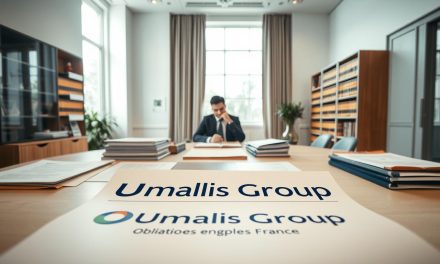When Claire, a freelance UX designer in Lyon, lost a major client she did what many of you might: she mapped a single project deeply to learn what actually worked. That focused review turned into a small research habit that improved her pricing and client selection the next quarter.
We introduce how a few well-chosen examples act as a reliable compass for independent professionals in France. These concise examinations translate complex real-world examples into practical steps you can apply immediately to client acquisition, pricing, and project design.
Our approach balances academic rigor with plain language. You will learn how one study can reduce uncertainty by clarifying context and mechanisms behind success. We explain the principles we use to select cases so you can trust the quality and the value of each insight.
Table of Contents
Key Takeaways
- Well-selected case studies turn narrative information into testable actions.
- One focused study can cut uncertainty and speed better decisions.
- We prioritize recency, practical relevance, and business rigor.
- Learn to extract signals, ignore noise, and adapt insights locally in France.
- Follow our framework to convert research into higher-margin offers and stronger positioning.
Why case studies matter right now for independent professionals in France
Timely examples of real projects help independent professionals translate uncertainty into action. In a volatile market and economy, documented examples show how peers handled funding cycles, policy shifts, and tight timelines. That makes research-driven lessons immediately useful when you set prices or scope a proposal.
Each study captures decisions, measurable outcomes, and the context that shaped them. You can match your situation to similar cases and choose strategies with a higher chance of success. This reduces costly trial-and-error and improves the predictability of your next quarter.
- They surface practical data—conversion, churn, acquisition costs—that point to high-impact actions.
- They reveal trade-offs under real constraints, helping you calibrate timelines and budgets.
- Recent research aligns your offers with current buyer expectations and compliance norms in France and the EU.
- Using cases builds trust: documented results help you justify recommendations and fees to clients.
We prioritize present, relevant research so you gain immediate value. That context-driven approach increases the practical value of each example and helps you enter new sectors with confidence.
What case studies are and how they work in real-world context
A concentrated inquiry into one organization or event can surface transferable lessons for your offers and pricing. This form of research examines a single unit intensively to explain a broader class of phenomena.
Authoritative definition
John Gerring defines this method as an intensive study of one unit or a small number of units to understand a larger population. Scholars in the social sciences and natural sciences use this approach to link context to outcomes.
Design approaches
Designs range from single-unit process tracing to multiple-unit comparison. Some methods start with a theory; others favor discovery. Influential frameworks include Yin (multiple designs), Eisenhardt (discovery), Stake (construction), and Burawoy (anomaly-focused).
| Design | Purpose | Typical use | Advantage |
|---|---|---|---|
| Single-unit | Trace decisions over time | Complex projects, policy episodes | Deep context and mechanisms |
| Multiple-unit | Cross-case comparison | Sector contrasts, replication | Stronger external inference |
| Discovery | Generate new theory | Early-stage markets | Uncovers unexpected mechanisms |
| Anomaly-focused | Challenge prevailing views | Outliers, disruptive events | High information value |
Selection and limits
Choose typical, diverse, or extreme examples to sharpen inference. Use the process to specify mechanisms—short causal chains that explain outcome differences.
Be explicit about scope and terms. Small-N research offers depth but risks selection bias and limits broad generalization. When done well, however, it yields actionable insight you can adapt to the French market.
How we curated these case studies for practical value in the present
To be useful, every entry needed clear decision points, accessible data, and direct relevance to solo or small-team work in France.
We followed a set of selection principles that focus on design, strategy, management, measurable market outcomes, and societal impact. Priority went to recent reports and publications so examples reflect current platform rules and buyer expectations in the EU.
Process matters: we favored documented entries with explicit timelines, metrics, and sources you can verify. That reduces ambiguity when you adapt insights to pricing, scope, and delivery.
Selection highlights
- Preference for published materials and teaching repositories (SM385, SM386, E884, E914).
- Blend of discovery and theory-led approaches to surface practical steps.
- Filter for high information value: extreme growth, deviant outcomes, and anchor examples.
| Principle | Why it matters | Example sources | Application for freelancers |
|---|---|---|---|
| Relevance | Aligns with product and client needs | Stripe, Ancestry, Growth.Design | Use for pricing and scope templates |
| Verifiability | Allows cross-checking of data | Published reports, teaching notes | Build client-facing proposals with evidence |
| Impact | Shows measurable outcomes | TPG Rise, Nuveen, Estée Lauder | Position offers toward measurable results |
| Balance | Mix of typical and deviant examples | Box series, Conducting the Symphony | Choose comparable analogs for new sectors |
Scholars and practitioners informed our approach so you get both narrative insight and operational steps. The final index is built for fast lookup: when a client asks if something has worked, you can answer with verified information and clear next steps.
Design and strategy case studies shaping products and markets

Practical examples from leading firms reveal how design choices turn into measurable market wins. Each entry below links operational moves to clear outcomes so you can adapt them as an independent in France.
Stripe: the Stripe Way to consumption-based organization
Design a sales model that ties fees to customer usage. Jeanne DeWitt Grosser’s profile of Stripe shows how a consumption approach aligns incentives and improves retention.
Ancestry: strategy into product management and metrics
Deborah Liu’s modernization emphasizes lightweight management rhythms. Define objectives, pick leading indicators, and run short weekly reviews to keep delivery predictable.
Estée Lauder: positioning in skin longevity
Repositioning Re‑Nutriv used narrative and evidence to justify premium pricing. Attach your product and messaging to a growing narrative to reach buyers willing to pay more.
Freedom Holding: ecosystem as a path to scale
Timur Turlov’s approach bundles adjacent services to grow lifetime value. Independents can replicate this by packaging complementary offers and partnering with specialists for broader reach.
Growth.Design: UX, psychology, and better user outcomes
Montreal’s Growth.Design publishes short UX case summaries and psychology insights. Apply small interventions—simplify choices and reduce cognitive load—to boost conversions on proposals and pages.
- Practical translation: convert design decisions into pipeline, close, and expansion metrics.
- Organization at your scale: use weekly rituals and simple dashboards even if the team is lean.
- Research-lite: test one productized service, gather evidence, then expand.
Management, organization, and teaching cases for stronger operations
We focus on operational lessons that make your work reliable and defensible in France. Short, repeatable rituals help you manage uncertainty and improve client trust.
Box series: activist pressure and proxy dynamics
Follow the Box sequence to learn how a visible stake and a proxy campaign change priorities. Clarify metrics, document decisions, and keep communication transparent.
Conducting the Symphony and multi‑party negotiation
This study shows a simple process: map interests, sequence outreach, and create mutual gains. Apply it when coordinating vendors, clients, and partners.
Decision models, scaling, and field operations
Ulu Ventures offers a scoring system to reduce bias. Trunk Tools shows how construction constraints become standardized workflows. Zum demonstrates platform SLAs for regulated services and students transport.
- Adopt lean rituals: weekly dashboards and one‑page operating docs.
- Formalize choices: simple scoring to speed commitments.
- Standardize delivery: checklists, automated reports, and clear escalation paths.
Teaching resources, including harvard business content, let you rehearse decisions in low‑risk settings. Use them to sharpen your organization and protect client outcomes.
Impact, political economy, and social sciences cases with measurable outcomes

Real-world impact entries show how political economy forces shape which projects scale and which stall.
TPG Rise Climate with Twelve and Nuveen’s Amazon Reforestation Bond demonstrate outcome-based climate finance. These two case studies link financing to clear carbon and biodiversity outcomes. Use this model to set explicit impact KPIs in proposals for mission-driven clients.
Greentech Capital Advisors and EcoPlanet Family Office reveal how political economy dynamics direct capital. That insight helps you design offers for investors and NGOs with blended goals.
The Marshall Project, PayJoy, and Livara show social sciences research applied to journalism, inclusive credit, and brand building. These examples map causal chains and measurable outcomes that you can mirror in client work.
- Practical takeaway: define baselines, track outcomes, and report with disciplined research.
- Political economy perspectives improve stakeholder engagement and policy-aware roadmaps.
- Teaching materials in impact fields help rehearse trade-offs before public delivery.
How to apply insights from case studies to your freelance strategy in France
First define the situation precisely: what the client needs, what the market allows, and what users expect. This clear context lets you choose examples that match scope conditions and improve the strength of your inference.
A practical framework: define context, extract mechanisms, adapt principles
Start with a short context sheet: sector, constraints, timeline, and measurable goals. Keep it to one page so it is usable in proposals.
Extract mechanisms from each study: identify the specific actions that produced outcomes. Turn those actions into testable principles you can apply in a pilot.
Adapt principles locally. Note regulatory, cultural, or market differences in France and update acceptance criteria accordingly.
Action steps: market research, product positioning, metrics, and risk management
- Targeted research: run three customer interviews, a competitor scan, and a quick pricing test before commitment.
- Productize: build a repeatable offering with clear deliverables, metrics, and acceptance rules so clients see immediate value.
- Stage delivery: start with a discovery sprint, measure early signals, and expand scope only when data supports it.
- Document process: one-page briefs, a decision checklist, and weekly reviews create durable organizational learning.
Apply concepts from prior work as experiments: document outcomes and benchmark against curated references to refine your operating system.
| Tool | What to capture | Early signal | Why it matters |
|---|---|---|---|
| One-page brief | Context, users, constraints | Client alignment within week | Improves inference and speeds decisions |
| Decision checklist | Scope, acceptance criteria | Fewer scope changes | Reduces delivery risk |
| Weekly review | Metrics, blockers, next tests | Early detection of drift | Enables fast course correction |
| Pricing test | Offer, anchor, response rates | Conversion uplift or pushback | Validates product-market fit |
Practical note: link your positioning to timely narratives (longevity, ecosystem growth, platform safety) shown effective in prior examples. For tactics on finding clients and testing offers, see our guide on finding freelance clients.
Conclusion
Start each new engagement with one clear pillar: a short, research-backed brief that frames the problem, options, decision, and expected outcome.
Turn selected cases and one compact study into reusable templates. Keep them to one page so you can cite publications and scholars quickly during sales calls.
Combine simple methods—a metric tree, weekly reviews, and clear principles—to test mechanisms and improve inference. Use teaching materials (Harvard Business–style) to rehearse negotiations and stakeholder briefing.
Protect your freedom by building a small operating system: briefs, checklists, and a content library of user journeys. Commit to one improvement this week—pick two references, extract mechanisms, run a small test—and review results next week.
FAQ
What is the purpose of the "Case Studies: Expert Guidance for Independent Professionals in France" collection?
This collection offers practical, research-backed examples to help independent professionals in France design services, refine strategy, and manage operations. We synthesize lessons from product, management, and political economy research so you can apply tested mechanisms to your market, reduce risk, and accelerate growth.
Why do these case studies matter now for independent professionals in France?
The market is shifting with new client expectations, platform dynamics, and regulatory changes. These examples show how organizations adapted strategy and design under uncertainty, helping you anticipate trends, position services, and make evidence-based choices to preserve stability and create value.
How do you define a case study in social and natural sciences terms?
A case study is an in-depth investigation of a bounded real-world instance — an organization, project, or intervention — used to explain mechanisms, context, and outcomes. We use definitions from political economy and organizational research to emphasize causal inference, context sensitivity, and theory-driven interpretation.
Which research designs do you use: single-case or multiple-case, theory-first or discovery?
We combine designs. Some examples are intensive single-case analyses for mechanism discovery; others are multiple-case comparisons to test patterns. We balance theory-first approaches when hypotheses exist and discovery-driven methods when exploring novel phenomena.
How were cases selected for inclusion?
Selection prioritized practical relevance: examples that illuminate design, strategy, management, impact, or market outcomes. We included typical, diverse, and extreme instances to surface transferable principles while preserving contextual detail for valid inference.
What are the main uses and limitations of these case-based lessons?
Uses: extract mechanisms, guide product positioning, inform organizational choices, and teach negotiation or finance tactics. Limitations: case-based evidence stresses depth over wide generalizability; adaptation is required for different markets and regulatory environments.
Can you give examples of product and market lessons featured?
Yes. Lessons include Stripe’s sales design for consumption-based models, Ancestry’s product-to-metrics path in product management, and Growth.Design’s psychology-informed UX practices. Each vignette highlights actionable tactics for positioning, pricing, and experimentation.
How do management and organization examples help freelancers and small firms?
Management cases like KKR/Box activist dynamics or scaling examples from Trunk Tools and Zum show governance, hiring, and partnership strategies. They offer models for decision frameworks, negotiation tactics, and operational scaling suited to boutique teams.
Are there examples focused on impact and political economy relevant to mission-driven professionals?
Yes. We include cases such as TPG Rise Climate, Nuveen’s Amazon Reforestation Bond, and Greentech Capital Advisors to illustrate structuring finance, measuring outcomes, and building impact portfolios that align mission with measurable results.
How do I apply insights from these cases to my freelance strategy in France?
Use our practical framework: define your client context, extract the underlying mechanisms, and adapt principles to local constraints. Action steps include targeted market research, clear product positioning, metric selection, and structured risk management.
What practical tools or templates are provided to implement these lessons?
We provide decision checklists, selection heuristics, and templates for hypothesis-driven experiments and metrics. These tools translate theory into concrete actions for product testing, client outreach, and performance monitoring.
How do you ensure the evidence is reliable and not biased?
We triangulate sources across academic literature, practitioner reports, and public financial disclosures. Where appropriate, we note limitations and alternative explanations to help you judge applicability and maintain prudent skepticism.
How frequently is the collection updated to reflect market and regulatory change?
We update periodically to capture significant shifts in markets, technology, or regulation. Updates focus on emerging tactics, new evidence from political economy research, and evolving best practices in product and management design.
Can these lessons be applied outside France or in other sectors?
Many mechanisms are transferable, but you must adapt for local market structures, legal frameworks, and customer behavior. We highlight boundary conditions and translation steps to help you apply insights across sectors and geographies.





